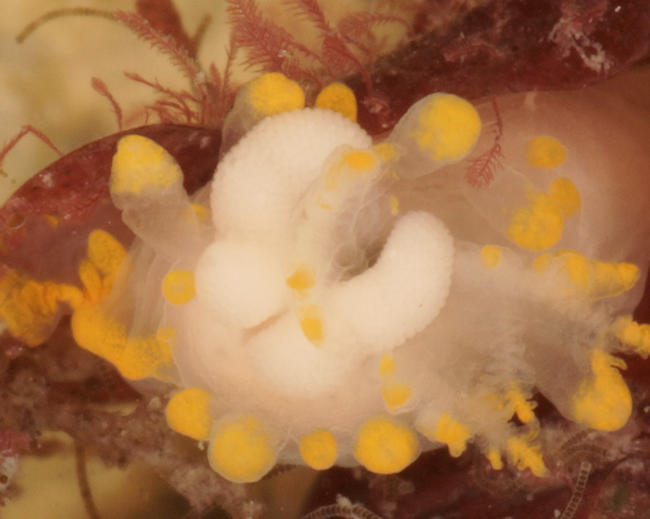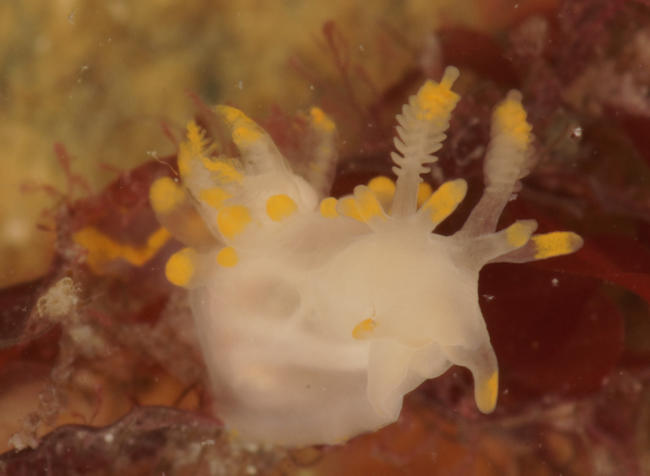
Florence GULLY le 12/11/14
Cette limace nous semble bien étrange avec ses nombreux appendices en massue au niveau des branchies et son nombre de tentacules à l'avant qui dépasse celui que devrait avoir Polycera quadrilineata .Alain-Pierre SITTLER le 13/11/14
Et hop ! Merci Florence et Marc ! :-)Florence GULLY le 12/11/14
Voici un gros plan des tournicotis" blancs au milieu des branchies.
Hervé LIMOUZIN le 12/11/14
bonjour,Florence GULLY le 12/11/14

Dominique REJANNE le 12/11/14
Voila ce qui se cache derniere ce nom (si l'identification est bonne) : Xhttp://www.nudibranch.org/Scottish%20Nudibranchs/html/ancula-gibbosa-06.htmlFrancis POLLAK le 12/11/14
| Espèces ressemblantes |
| Polycera faeroensis, mais celui-ci porte habituellement huit tentacules labiaux, et des appendices extrabranchiaux plus courts et trapus. Il n'a pas de taches jaunes sur le dos. Polycera aurantiomarginata ressemble à la variété foncée de Polycera quadrilineata, mais il a le bord du pied souligné d'une ligne orange, continue ou non, et les rhinophores et branchies ont les pointes noires. Thecacera pennigera ne présente pas de tentacules labiaux. Les Trapania sp. sont également blanches et jaunes, mais un tentacule en virgule entoure la base de chaque rhinophore. Ancula gibbosa présente également des tentacules à la base des rhinophores et quatre appendices extrabranchiaux et non deux. Crimora papillata présente de nombreux appendices labiaux, courts et bifides. |
There are many internal anatomical differences between species of Ancula and species of Polycera, and fortunately there are a few external ones as well. Firstly, in species of Polycera, there is an extension of the mantle edge into an 'oral veil' over the head, at the anterior end. The edge of this oral veil has a number of tentacular processes which point out horizontally and are arranged in equal numbers on each side of the midline. Species of Polycera usually have a single lateral process alongside each gill, but this is not always a clear distinction, because related polycerids may have a number of processes alongside the gills.
In Ancula, their is no oral veil, there are two forward facing tentacular processes arising from the base of each rhinophore, and their are a number of lateral processes arranged on each side of the body, alongise and just behind the gills. The simplest difference from polycerids is the lack of an oral veil so the head is clearly visible from above.
Vincent MARAN le 12/11/14
BonjourLes textes et images sont sous licence et ne sont pas libres de droit.
Pour les ayants-droits, connectez-vous.
Pour toute demande d'utilisation (exemple d'un formateur Bio de la FFESSM...) contactez nous ici.